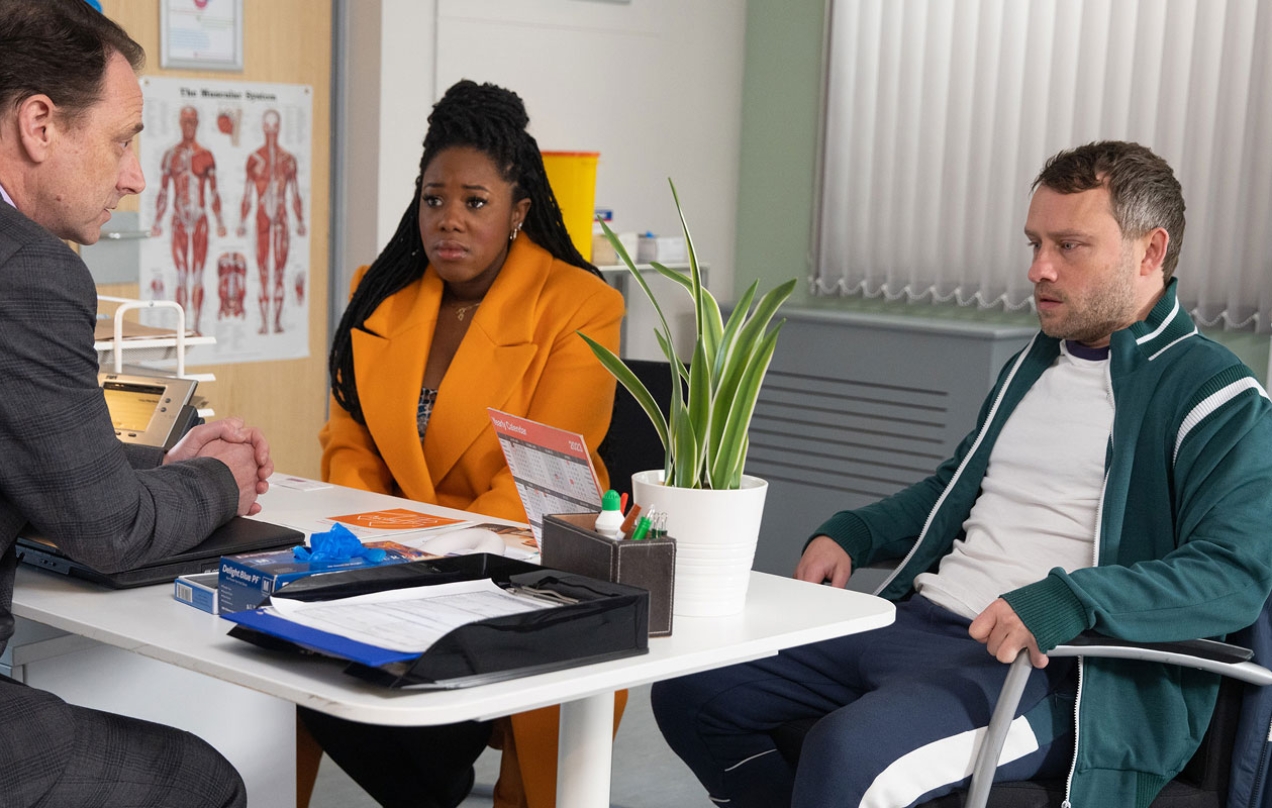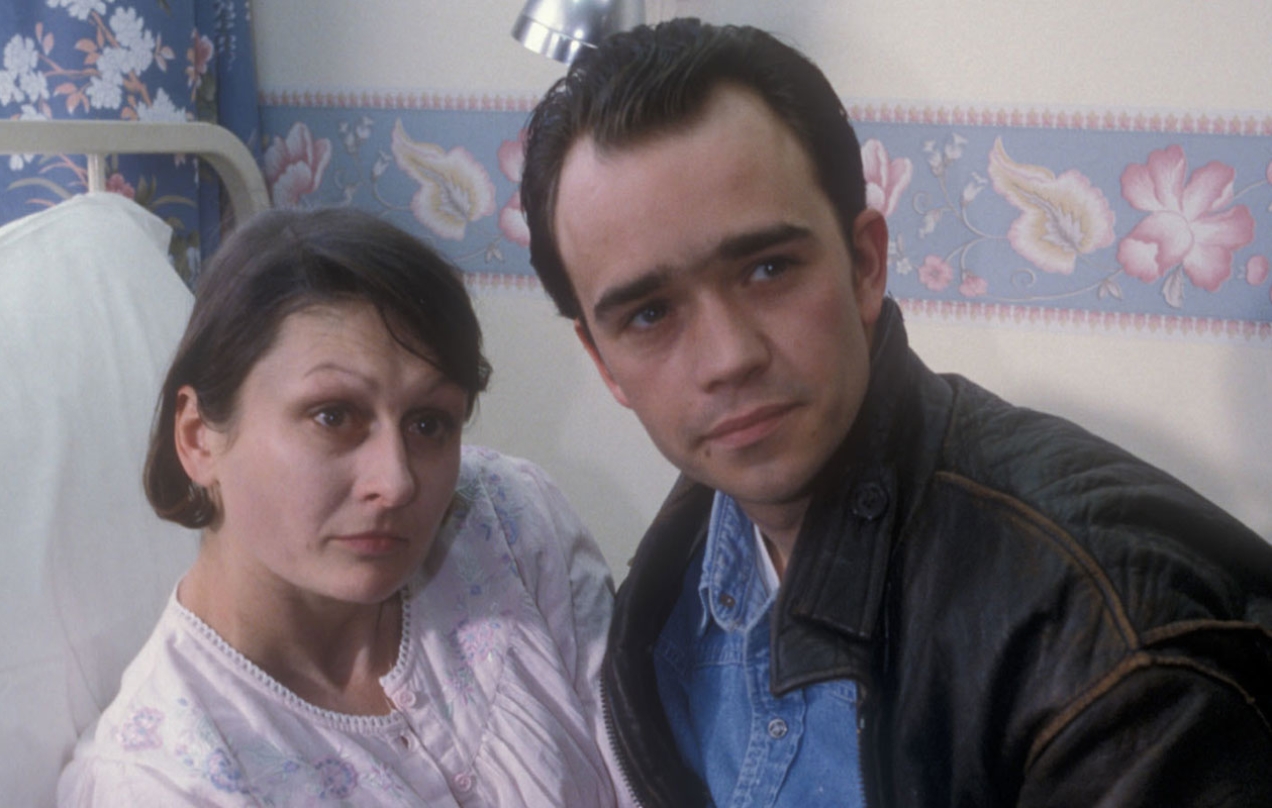Cleaning up with the power of soap
Charity PRs are increasingly teaming up with serial dramas to help bring their message to the screen. TV journalist and former editor of Inside Soap magazine Steven Murphy examines what makes this such a great opportunity - and uncovers the potential pitfalls.
While it may be a little unkind to dismiss soap operas as "moving wallpaper", to many they are perceived as little more than a melee of pub slanging matches, predictable affairs and ludicrous serial killers. But there is another aspect of the genre which has been moving to the forefront over the last decade, not only in the shows' storytelling, but in their press profile.
Back in April in Coronation Street, viewers saw builder Paul Foreman diagnosed with Motor Neurone Disease. The soap worked with the Motor Neurone Disease (MND) Association in the planning and execution of what is to be a long-running storyline. When the episodes aired, millions learned details of this debilitating illness via the drama playing out on screen. But elsewhere, countless pieces of media coverage outlined the story and the MND Association's part in it. Traffic to the association's website soared, as did Google searches for information on the subject. This isn't a one-off. Working with soaps is now a popular way for charities to reach out with their message on social issues.

ITV
Of course, social messaging in soap is nothing new. The granddaddy of them all, The Archers, was originally commissioned in 1951 to disseminate farming advice as post-war Britain rebuilt itself. The TV soaps which followed through the 1960s and 1970s touched on social issues - creaky old Crossroads delivered TV's first ‘test tube baby' to mousy waitress Glenda, for example. But it was the later 1980s, with the arrival of the grittier Brookside followed by EastEnders when soaps really held up a mirror up to life in those turbulent times. Unemployment, mental health, drug abuse and sexuality were just some of the issues played out in these shows, many for the first time.
But in 1991 came what many see as a watershed moment in social issue storytelling and its effect on the public consciousness. With AIDS hysteria rife throughout the 1980s, the government response was the grim "Don't Die of Ignorance" campaign, all dark granite tombstones and looming icebergs. Then, on Boxing Day 1991, 19 million viewers watched a son stand in his living room and explain to his parents that he was HIV positive. The Mark Fowler story in EastEnders arguably did more to inform the public than the millions the government poured into their campaign.
On Boxing Day 1991, 19 million viewers watched a son stand in his living room and explain to his parents that he was HIV positive.
HIV and AIDS charity the Terrence Higgins Trust worked with EastEnders on the Mark story, and 30 years later is currently advising the soap on another HIV story with a similar message. "I think soap is in many ways the best medium to tell these stories," says Fraser Wilson, head of media and PR for the charity. "It's not just about one dramatic moment, it's about that life then going forward, which is why the Mark Fowler storyline was so powerful. There's so much opportunity for the viewer to learn over time."

BBC Archive
Bryan Kirkwood, former producer of Hollyoaks and EastEnders, who has worked on several critically acclaimed issue stories, concurs, "Soaps are the perfect vehicle for these topics. You are in people's living rooms and through these characters - who often become family to the viewers - you can convey all the complications, controversy and conflicts that you would have in real life. You can really help change the conversation around a topic."
Working together
These days, with soaps often running more than one ‘issue' story at any one time, working with charities or appropriate organisations has become a year-round operation. The initial spark for these stories usually comes from the show's regular conferences, where writers and producers plan out the next big stories, rather than a direct approach from a charity. "That can be a bit mechanical to do it that way around," says Kirkwood. "The best television comes from the creative brain rather than an agenda being stapled on top."
The soaps' editorial teams do, however, take inspiration from the world around them. Media stories often plant a seed. EastEnders, for example, reached out to the Terrence Higgins Trust over what became the current HIV storyline following their campaign last year on a rise in diagnoses in the straight population.
The charity's main role in the relationship is to provide information and expert advisors, setting up meetings between the writers and appropriate individuals. However, this isn't only a ‘fact-checking' exercise. The charity's expertise can often help shape the story and provide realistic nuance. ITV, which produces Emmerdale and Coronation Street, state that these discussions, "hugely enrich the stories - it's often the telling detail which comes from those conversations that help make the story both authentic and empathetic."
As well as checking storylines and scripts, charities can often provide more practical help, such as appropriate advisors during filming to ensure authenticity if the scene requires it.
On air
However it's as the story approaches the screen that the synergy between soap and charity can pay off. The sensitive nature of these stories sees them heavily signposted to the public. This normally begins with a press release in the weeks leading up to transmission, with a strong emphasis on the charity's involvement. "We will always announce an issue story before it comes to the screen in a really robust way with all of the charity support in place," says Lucy Connolly, senior publicity and digital manager for Lime Pictures' Hollyoaks. "If we are going into a sensitive story, it inspires confidence and it's reassuring to people that the story is being approached in the right way."
The ongoing nature of soap sees multiple opportunities arise as the story develops over weeks, months and even years. Suzanne Ostler, head of communications for the MND Association, reveals that over the coming months, they will "map the milestones of the storyline so that we can use those as hooks to share information about our own work."
Meanwhile, a combination of a popular TV show and a human-interest story can nudge open doors neither could alone. BBC Breakfast, whose usual coverage of Coronation Street is far scanter than that of its more showbiz-led rival Good Morning Britain, reached out to arrange a visit to the Coronation Street set by former rugby player Rob Burrow, an MND Association patron who is living with the disease.
And it's not just about reaching the public. The exposure the storyline brings can also be vital in talking to those in power. "The reach of something like this story is really important," explains Chris James, director of External Affairs for the MND Association. "We're trying to influence decision-makers, so they understand the disease, what needs to be done and the money that has to be spent on MND."
What's the catch?
So far, this all sounds like a real win-win for soap and charity. However, it's worth pointing out that the process is not without its pitfalls. While the charity is there to ensure factual accuracy, the soap is still fundamentally making a drama, and quite a high-octane one at that.
"There will always be a bit of push and pull for dramatic licence," says Kirkwood. "Because fundamentally, if nobody is watching the show for entertainment, then you're shouting about your message into an empty room." From the charity's viewpoint, this can prove challenging. "There are times where I have literally locked horns with researchers and storyliners," admits Duncan Craig OBE, chief executive officer of We Are Survivors, which supports male survivors of sexual abuse. "Getting the relationship right between the show and the charity from the beginning helps when things get challenging. There do have to be compromises, but as long as the story isn't giving people false information - or it's not too ‘Bobby Ewing in the shower' - then sometimes you just have to accept that this is a soap."
And while there's no doubt these stories can be a power for good, with great power also comes great responsibility - particularly to those viewing who may have been through a similar experience. Craig says that We Are Survivors "Will always put in safety measures. Making sure we have social media after the episode on how to get support, ensuring other colleagues across the support sector are aware of the episode, keeping our phone lines open longer."
But no matter how much care the soaps and the charities take, criticism is inevitable. The soap can only follow one character's story, and that may not mirror what the viewer at home has experienced. "When you are dealing with something so visceral and important to a viewer, which they're living with right now if their experience doesn't directly relate then you can often see quite angry reactions to it," says Kirkwood. "Even though it has been forensically researched and signed off by the charities, it's challenging to know that someone's upset when you've done all the work to ensure no one is."
Issue stories often portray the darker side of life and are not to everyone's taste. Complaints to Ofcom are common.
Of course, by their nature, these issue stories often portray the darker side of life and are not always to everyone's taste. Complaints to Ofcom are common, although the rigorous research alongside the soap's own editorial guidelines means they are rarely upheld. Even the most complained-about episode in soap history, which saw 13,400 grievances lodged between the BBC and Ofcom, saw itself cleared. The 2010 EastEnders plot saw Ronnie Mitchell lose her newborn son to cot death and, in the depths of despair, swap him with the baby of her neighbour Kat Moon. In the end, the backlash overshadowed the issue of Sudden Infant Death syndrome (SIDS) the show had been working to highlight.
How much lather?
There's no doubt these stories have been a big success - soap producers' office shelves are heavy with awards. They have also been a useful weapon in the soaps' battle to stem the ratings slide, as viewing drifts away from traditional linear TV. But there's a question over how to measure what the stories achieve from the charity's point of view.
Direct response figures are impressive. The Terrence Higgins Trust web traffic increased by 75 per cent on the night of Zack's diagnosis in the recent EastEnders storyline, while their best-performing tweets of the period were related to the story, many outlining their key messaging that effective HIV treatment can prevent transmission. Going back through recent years, double-figure increases in enquiries are commonplace. The 2018 David Platt rape story in Coronation Street saw We Are Survivors receive a 65 per cent increase in requests for help, while fellow charity Male Survivor reported a 1,700 per cent increase in calls to their phoneline.
Direct response figures are impressive. The 2018 David Platt rape story in Coronation Street saw We Are Survivors receive a 65 per cent increase in requests for help.
However, awareness or changes in attitude, often a big part of the charity's objectives, is not so easy to quantify. The Terrence Higgins Trust is carrying out research later in the year to tie in with the EastEnders storyline and assess its key message, while the MND Association has had success with an explanatory video across their socials, outlining the disease and its effects. But isolating the soap story's influence is challenging in what is a much longer game.
The MND Association moots the bottom line as a possible answer to measuring impact. After working with its patrons Rob Burrow and fellow rugby player Kevin Sinfield, the organisation saw a "halo effect", with the coverage of the pair's endeavours inspiring others to get involved, impacting positively on donations received. "Perhaps that will give us a steer as to how we may be able to measure the impact of the Coronation Street storyline over the coming months," says Ostler.
But perhaps the biggest success is the one we cannot measure, but which strikes right at the heart of the charity's objectives - the impact on individuals. Craig states the aim of We Are Survivors is to "break the silence". He recalls making an appearance on The Wright Stuff to discuss a Hollyoaks male rape storyline. The same day, he received an email from a 68-year-old man, who was on his way to explain to his daughter why he had been so distant his whole life, and for the first time reveal what happened to him as a child. Would Craig have had the platform of appearing on Matthew Wright's show and the chance to deliver that message without Hollyoaks? "Undoubtedly not," he says. "And that is exactly why we tell these stories."
https://www.linkedin.com/in/stevenmurphyfreelance/


